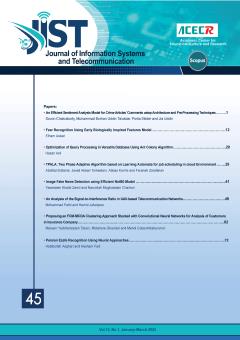With the rapid deployment of users and increasing demands for mobile data, communication networks with high capacity are needed more than ever. Furthermore, there are several challenges, such as providing efficient coverage and reducing power consumption. To tackle thes
More
With the rapid deployment of users and increasing demands for mobile data, communication networks with high capacity are needed more than ever. Furthermore, there are several challenges, such as providing efficient coverage and reducing power consumption. To tackle these challenges, using unmanned aerial vehicles (UAVs) would be a good choice. This paper proposes a scheme for uplink non-orthogonal multiple access (NOMA) in UAV communication systems in the presence of granted and grant-free users. At first, the service area users, including granted and grant-free users, are partitioned into some clusters. We propose that the hover location for each cluster is determined considering the weighted mean of users’ locations. We aim to allocate transmission power and form NOMA pairs to maximize the energy efficiency in each cluster subject to the constraints on spectral efficiency and total transmission power. To this end, the transmission powers of each possible pair are obtained, and then Hungarian matching is used to select the best pairs. Finally, finding the flight path of the UAV is modeled by the traveling salesman problem (TSP), and the genetic algorithm method obtains its solution. The results show that the increasing height of the UAV and density of users increases the spectral and energy efficiencies and reduces the outage probability. Also, considering the quality of service (QoS) of granted users for determining the UAV's hover location enhances the transmission's performance.
Manuscript profile


